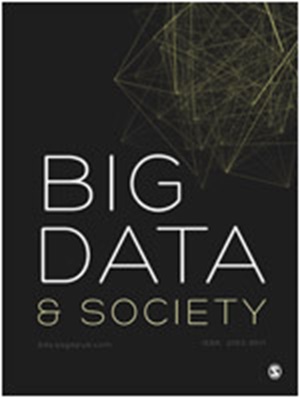短路生物学:精神病学中的数字表现型、数字生物标志物和转移目光
IF 5.9
1区 社会学
Q1 SOCIAL SCIENCES, INTERDISCIPLINARY
引用次数: 1
摘要
数字表型是一个快速发展的研究领域,有望改变精神病学测量、分类、预测和解释人类行为的方式。本文提出了数字表现型的认识论和知识主张的社会科学检验。根据20世纪60年代以来精神病学中“神经分子凝视”的概念,它表明数字表现型涉及一种新的精神病学凝视——“数字凝视”。数字凝视并没有赋予神经分子解释特权,而是赋予了数字技术和大数据提供的生理、行为和社会“深层真相”特权。这篇文章探讨了指导数字凝视的两个概念:“数字表现型”和“数字生物标志物”。这两个概念都明确了“数字”和“生物”之间的认知联系。本文考察了这种联系的合理性和结构,首先,提供了数字表现型主张的“现实检查”,其次,更清楚地描绘和划分数字凝视。它认为,有证据表明,对数字表型在生物学中的基础存在严重的错误和夸大,包括在被大肆宣传的精神病学数字生物标志物研究中。一些人认为,数字心理健康表型并没有推动数字痕迹的生物化,迄今为止,数字心理健康表型似乎主要与可以通过数字设备监控的生理、行为和社会过程有关。本文章由计算机程序翻译,如有差异,请以英文原文为准。
Short-circuiting biology: Digital phenotypes, digital biomarkers, and shifting gazes in psychiatry
Digital phenotyping is a rapidly growing research field promising to transform how psychiatry measures, classifies, predicts, and explains human behavior. This article advances the social-scientific examination of digital phenotyping's epistemology and knowledge claims. Drawing on the notion of a “neuromolecular gaze” in psychiatry since the 1960s, it suggests that digital phenotyping concerns a new psychiatric gaze—the “digital gaze.” Rather than privileging neuromolecular explanations, the digital gaze privileges the “deep” physiological, behavioral, and social “truths” afforded by digital technologies and big data. The article interrogates two concepts directing the digital gaze: “digital phenotype” and “digital biomarkers.” Both concepts make explicit an epistemic link between “the digital” and “the biological.” The article examines the soundness and construction of this link to, first, offer a “reality check” of digital phenotyping's claims and, second, more clearly delineate and demarcate the digital gaze. It argues there is evidence of significant mis- and overstatements about digital phenotyping's basis in biology, including in much-hyped psychiatric digital biomarker research. Rather than driving the biologization of digital traces, as some have suggested, digital mental health phenotyping so far seems mainly concerned with physiological, behavioral, and social processes that can be surveilled by means of digital devices.
求助全文
通过发布文献求助,成功后即可免费获取论文全文。
去求助
来源期刊

Big Data & Society
SOCIAL SCIENCES, INTERDISCIPLINARY-
CiteScore
10.90
自引率
10.60%
发文量
59
审稿时长
11 weeks
期刊介绍:
Big Data & Society (BD&S) is an open access, peer-reviewed scholarly journal that publishes interdisciplinary work principally in the social sciences, humanities, and computing and their intersections with the arts and natural sciences. The journal focuses on the implications of Big Data for societies and aims to connect debates about Big Data practices and their effects on various sectors such as academia, social life, industry, business, and government.
BD&S considers Big Data as an emerging field of practices, not solely defined by but generative of unique data qualities such as high volume, granularity, data linking, and mining. The journal pays attention to digital content generated both online and offline, encompassing social media, search engines, closed networks (e.g., commercial or government transactions), and open networks like digital archives, open government, and crowdsourced data. Rather than providing a fixed definition of Big Data, BD&S encourages interdisciplinary inquiries, debates, and studies on various topics and themes related to Big Data practices.
BD&S seeks contributions that analyze Big Data practices, involve empirical engagements and experiments with innovative methods, and reflect on the consequences of these practices for the representation, realization, and governance of societies. As a digital-only journal, BD&S's platform can accommodate multimedia formats such as complex images, dynamic visualizations, videos, and audio content. The contents of the journal encompass peer-reviewed research articles, colloquia, bookcasts, think pieces, state-of-the-art methods, and work by early career researchers.
 求助内容:
求助内容: 应助结果提醒方式:
应助结果提醒方式:


